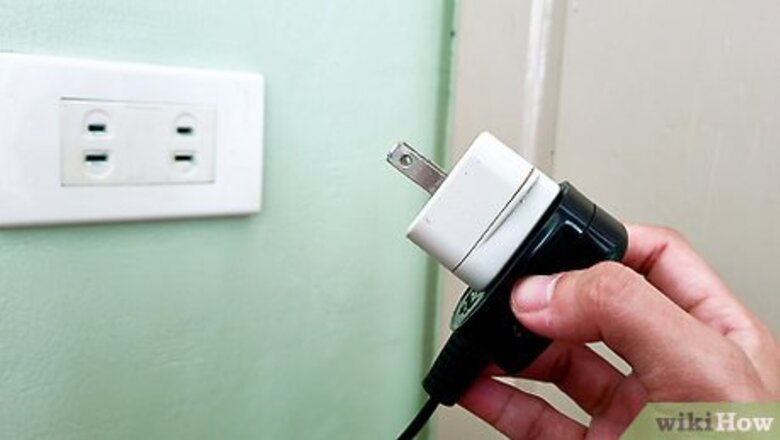
views
Cleaning Your Fridge
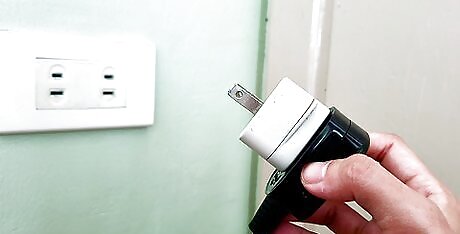
Unplug your fridge to keep it from running while you’re cleaning. Keeping your fridge open while it’s still on wastes a lot of energy, so turn off the power. Slide your fridge away from the wall and disconnect the power cord. Leave your fridge unplugged for the entire time you’re cleaning. If it’s too hard to access your fridge’s outlet, turn the temperature to the warmest setting instead so it won’t run as frequently.
Empty your fridge and freezer completely. Take all of the food you have in your fridge and set it aside while you’re cleaning. You can safely keep your food out at room temperature for less than 2 hours, so it’s okay to keep them on a table or countertop. Clear it all out so you can access the backs of the shelves and the bottoms of the drawers. If you’re worried about your food going bad or thawing, keep the products in a cooler so they don’t warm up to room temperature.
Throw away spoiled and expired food. As you’re pulling out the food from your fridge, check the packaging to see when it expires. If it’s past the listed date, throw it away since it could be making your fridge smell. For leftovers or food without a “best by” date, open them up and give them a quick smell. If they smell sour or pungent, it’s a sign they’re going bad. Keep your eye out for any mold growth, such as fuzzy or colorful spots on your food, and get rid of anything that’s contaminated immediately.
Clean crumbs and spills with a damp towel. Wet a microfiber cloth or a paper towel with only warm water. Wipe the shelves, drawers, and walls of your fridge with the towel to get rid of any residue that’s left on them. Collect all of the solid waste and throw it in your trash can right away. Many refrigerators have removable shelves and drawers so they’re easier to clean and access.

Wipe the fridge with baking soda solution to eliminate odors completely. Combine 1 tablespoon (14.4 grams) of baking soda with 4 c (950 ml) of warm water in a bowl. Wet a microfiber towel with the solution and wipe down all the surfaces inside your fridge and freezer. Focus on the walls, shelves, and seals around the doors. After you finish, rinse the baking soda off with a towel soaked in plain water. If you have caked-on residue that doesn’t come off, wet it with the solution and scrub it with an old toothbrush.
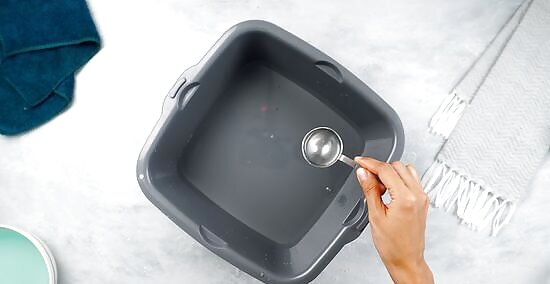
Sanitize your fridge with a bleach and water solution for persistent odors. Bleach works best after you’ve already wiped your fridge down with another cleaner. Mix together 1 tablespoon (15 ml) of bleach with 1 gallon (3.8 L) of warm water. Wet a towel or paper towel in the solution and wipe all of the exposed surfaces in your fridge and freezer. The bleach will kill the bacteria and microbes causing the odors. Wear rubber gloves while you’re cleaning to prevent any skin irritation from the bleach.

Scrub the condenser coils under your fridge if there’s a burning smell. The condenser coils work to keep the refrigerant cool, but sometimes they get dusty and work less efficiently. Always make sure your fridge is unplugged before working on the coils. Look for the coils at the bottom of your fridge behind a front vent or a back panel. Scrub the coils with a metal coil-cleaning brush and vacuum out the loose dust. Keeping your fridge connected to power while you clean the coils could lead to electrocution.

Air out your fridge for 30 minutes. The odors could come back quickly if you keep your fridge closed and sealed right away. Keep the doors open to your fridge and freezer so any residual odors can escape. Leave your fridge unplugged so it doesn’t run and waste electricity while it’s drying out. After 30 minutes, close your fridge and plug it back in. If the doors don’t stay open by themselves, prop them open so they don’t accidentally close.

Wipe food containers with soapy water before putting them back. Put a few drops of dish detergent into a sink with warm water and wet a washcloth. Wipe the outside surface of each container with your washcloth before setting it back in your fridge. Work through all of the containers one by one until you’ve restocked your fridge completely.
Eliminating Stubborn Odors
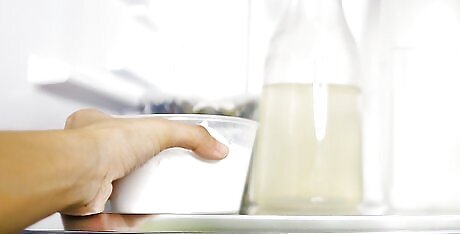
Leave an open box of baking soda in your fridge for absorbing odors. Open a box of baking soda and set it on one of the shelves inside your fridge. The baking soda will absorb all of the odors from other foods so it doesn’t build up in your fridge. Keep the box there for up to 3 months before replacing it. Alternatively, you can pour the box of baking soda onto a cookie tray or into a bowl and leave it in your fridge.

Try wiping lemon juice in your fridge for a nice citrus scent. Soak a paper towel with lemon juice and wipe down the surfaces inside your fridge. The acid in the lemon juice helps kill bacteria while leaving a refreshing smell behind. If you don’t want to use lemon juice, keep a few lemon slices on a plate in your fridge to absorb the odors.

Put cotton balls soaked in vanilla in your fridge for a fragrant aroma. Wet a few cotton balls with pure vanilla extract so they’re completely saturated. Keep the cotton balls on a dish and put them uncovered inside of your fridge for 1 full day. Check your fridge the next day to see if the odor is still there.
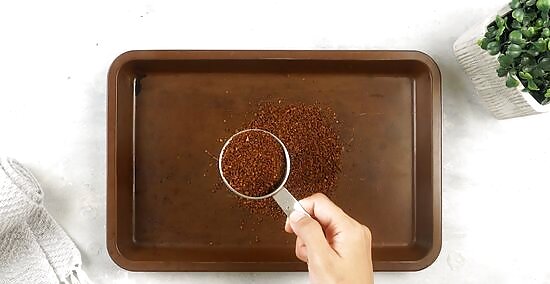
Try newspapers or coffee grounds to mask the bad smells. Line a shallow container, like a cookie tray or baking sheet, with crumpled newspapers or coffee grounds and set it in your fridge. Newspaper and coffee grounds can absorb food odors so they don’t build up in your fridge. Leave the container there for a day or two before checking on the odors again. You could also use unscented cat litter or activated charcoal as well.
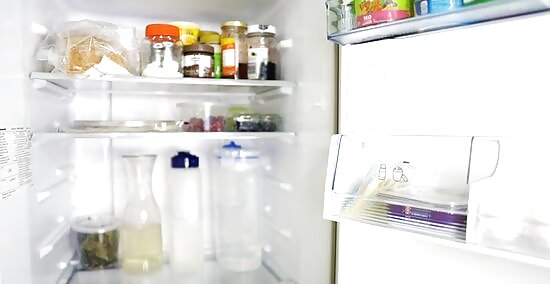
Keep your fridge between 37–40 °F (3–4 °C). Temperatures that are too warm promote bacterial and microbial growth and could make odors come back. Check the temperature of your fridge with a thermometer and if it’s too hot, lower the settings back into the acceptable range. Keep a thermometer in your fridge if it doesn’t have one built-in so you can always monitor the temperature. If you’re worried about your freezer, try keeping it around 0–4 °F (−18 – −16 °C).
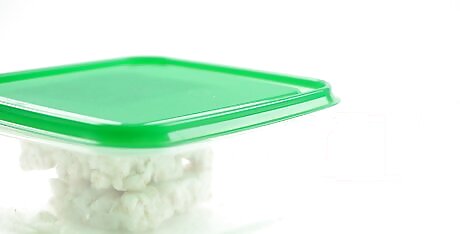
Store food in air-tight containers. Rather than keeping loose food in your fridge that could give off bad smells, keep it sealed. While glass containers work best for preventing odors, you can still use metal or plastic ones to manage the odors. Make sure you seal all of your food tightly so it doesn’t go bad. Label the containers when you made or bought the food that’s inside them so you eat it before it goes bad. Get some reusable containers in a variety of sizes and shapes so you can store any type of food.

Prevent rotting produce with silica mats. Silica mats are liners that help air flow around produce so it doesn’t go bad as quickly. Line the bottom of your crisper drawers with a few silica mats and set loose produce on top of it. Silica mats also prevent odors, so it’s a win-win for getting rid of smells and keeping food fresh! You can buy silica mats online or from home goods stores.



















Comments
0 comment